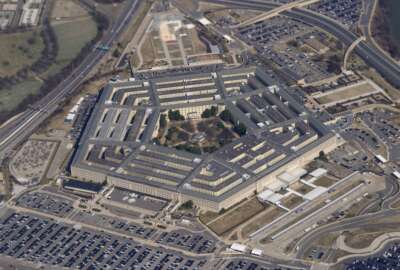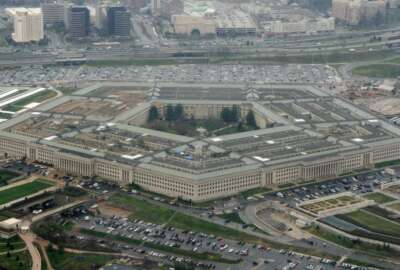DoD unveils Fulcrum to guide IT advancements
“I want [Fulcrum] to get all the way down to the individual program managers and have them adjust their day-to-day decisions," said Leslie Beavers.
The Defense Department’s new strategy, which links its high-level strategic documents and the supporting strategies, represents the department’s shift toward leveraging information technology as a critical strategic enabler.
Dubbed Fulcrum: The DoD’s IT Advancement Strategy, the document will serve as the north star for the department’s IT goals and objectives for fiscal 2025-2029. At the forefront of this approach is user experience, and the strategy succinctly lays out how to measure progress during the implementation of Fulcrum.
“Fulcrum crystallizes the department’s vision into what success looks like for the next five years,” DoD Principal Deputy CIO Leslie Beavers told reporters during a media roundtable on Tuesday.
“I want it to get all the way down to the individual program managers and have them adjust their day-to-day decisions of how they run their programs and as they’re solving their problems to make sure that they do it in a way that works interoperably across the department and with the end user in mind. So in order to do that, we’ve tried to clearly articulate the vision of what success looks like.”
Savan Kong, the deputy CIO for information enterprise, said he wants Fulcrum to be a resource that military and civilian components continuously turn to as they plan, build, and deliver user-friendly and adaptable capabilities to warfighters.
“In the department, we write a lot of documents. What I would like specifically for Fulcrum is to have it be a good partner and a good tool for all of our partners across the department so that they can keep on referencing it continuously over and over again, and that they can lean on when they’re actually having conversations about the decisions they need to make and the things they need to do in the coming future. So if I had to choose anything, I would love for Fulcrum to be that partner,” Kong said during the roundtable.
The strategy, signed by Deputy Secretary of Defense Kathleen Hicks, was unveiled by Beavers at the AFCEA TechNet Cyber conference on Tuesday.
The CIO office formed a writing team of 40 authors from across the department, including the Chief Digital and Artificial Intelligence Office, the Joint Staff and all the military services to put together the document.
“I think one of the more important pieces of this whole exercise of producing Fulcrum is making sure that we had representatives in the room that actually represent the warfighter to the greatest possible extent,” said Kong.
“Unlike some of the other documents that are more functional-based, ours has a very different approach. We tried to get as close to the users as possible. And we tried to really engage with them to the foundation of what they were seeing from a day-to-day basis and bring that back into the fold of what you see now.”
The document is organized around four lines of effort, including:
- LOE1: Providing Joint Warfighting IT capabilities that are functional, scalable, sustainable and secure.
- LOE2: Modernizing information networks by leveraging best-in-class technology and a data-centric zero trust cybersecurity approach.
- LOE 3: Optimizing IT governance to gain efficiencies in capability delivery, enable cost savings and streamline policies from governance all the way to acquisition systems.
- LOE 4: Cultivating a premier digital workforce capable of deploying emerging technologies to the warfighter.
“If I had to sum up what Fulcrum is like, it describes the What with regards to IT advancement and the Why it matters,” said Kong.
Each line of effort lays out the vision, strategic objectives and metrics to track progress.
The CIO office plans to release an implementation plan that will come out later this summer. Beaver said her team is also putting together a document that will lay out specific objectives and key results for the components to use.
“If you’re sitting in a program or a service and you’re like, ‘My cloud is doing well, but I want to up my game in my workforce area — what specific things should I do?’ We give you something to start with so you’re not starting with a blank piece of paper. Those are two very important documents that are going to come out this summer,” said Beavers.
Copyright © 2024 Federal News Network. All rights reserved. This website is not intended for users located within the European Economic Area.







